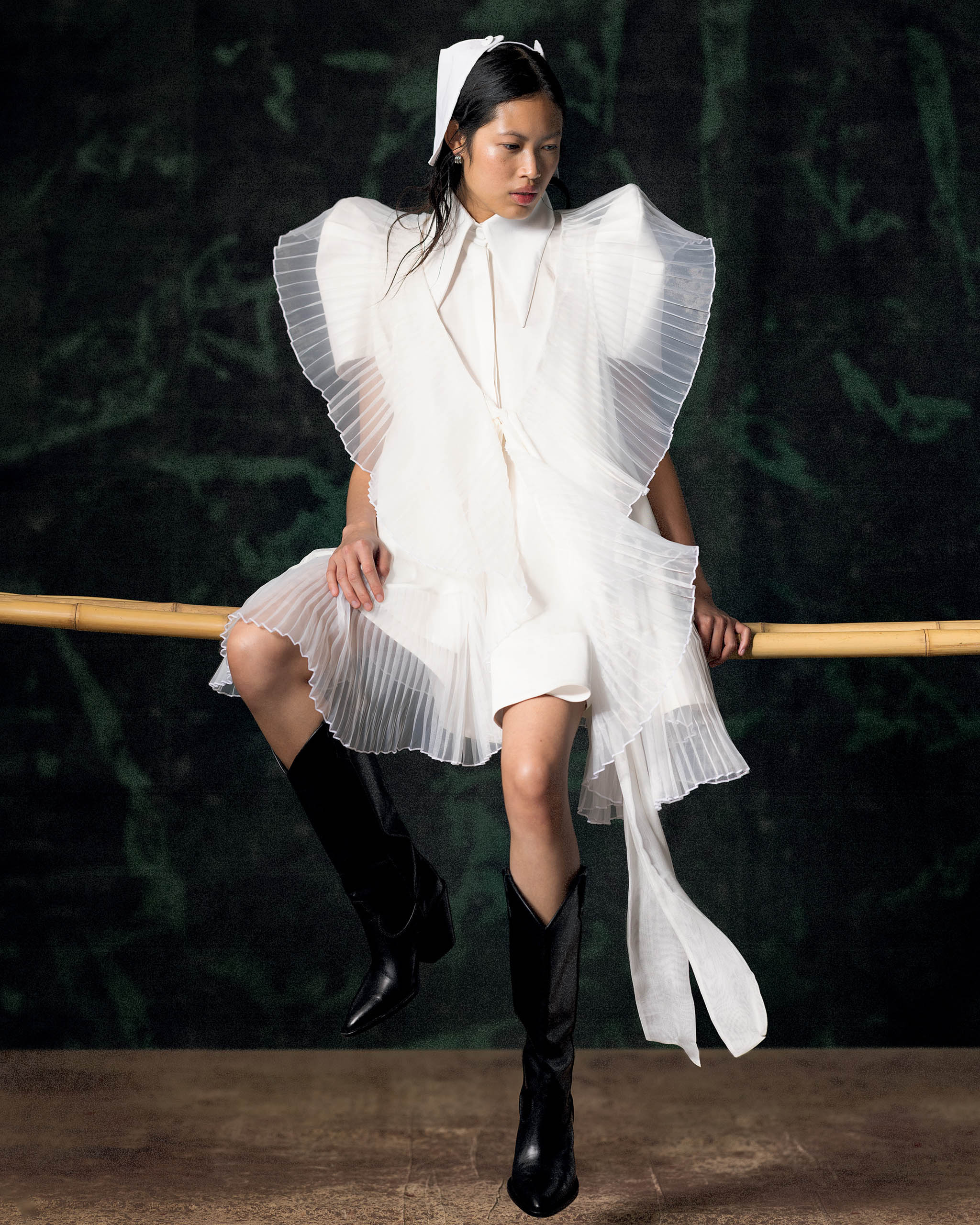GAIL SORRONDA dress and shawl, ROSE CHONG hat, SENER BESIM earrings, SCANLAN THEODORE shoes
HŌNE NAERA-SCOTT voyages to the 1700s, when Filipinos were one of the first settlers to step foot on American soil.
Hōne Naera-Scott is stuck in Tahiti. Intending to return to New Zealand after catching up with his brother in Paris, he stopped over first in Los Angeles, then in the French Polynesian island. As luck would have it, some of the staff and cabin crew of his airline, Air Tahiti Nui, have gone on strike. Yet the photographer seems unfazed by the situation, being away from home with no definite means to his destination.
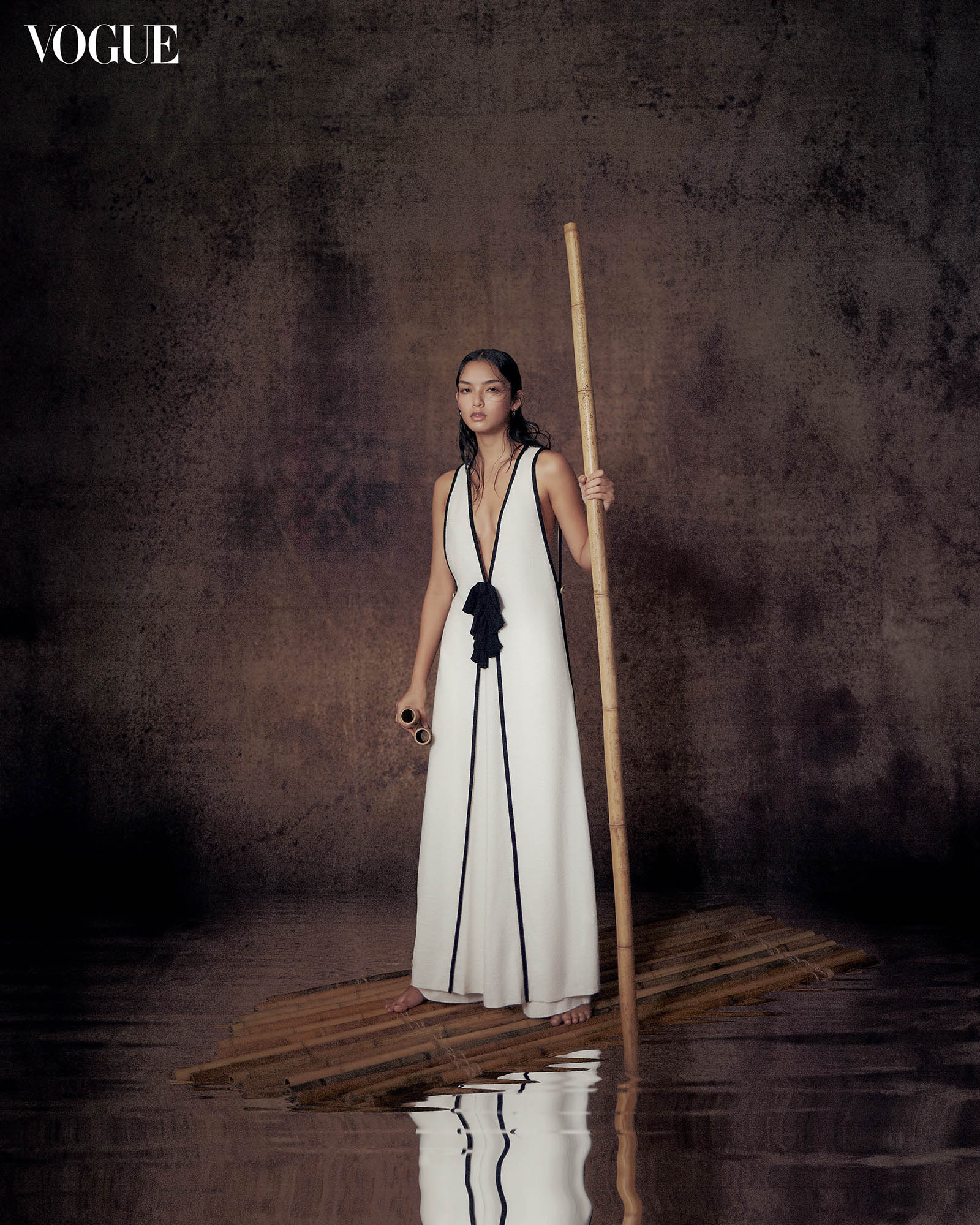
Dwelling in foreign territory is something Hōne is used to. “Up until my early 20s, I was always just trying to be a chameleon, trying to mirror whatever people wanted to see out of me,” the New Zealand-born Filipino-American reflects. Even his accent is one you can’t quite place: a predominantly Kiwi inflection tinged with hints of an American tongue.
Eventually, the gray areas surrounding Hōne’s multicultural identity thrust him into researching about Filipinos as the first settlers in America, a year-and-a-half-long project that hasn’t yet concluded. “Growing up, I’d always wanted to see Asian cowboys. It led me into this thing [on Filipinos as the first settlers in America], and I was like, this is crazy that no one knows about this,” he says, astounded.
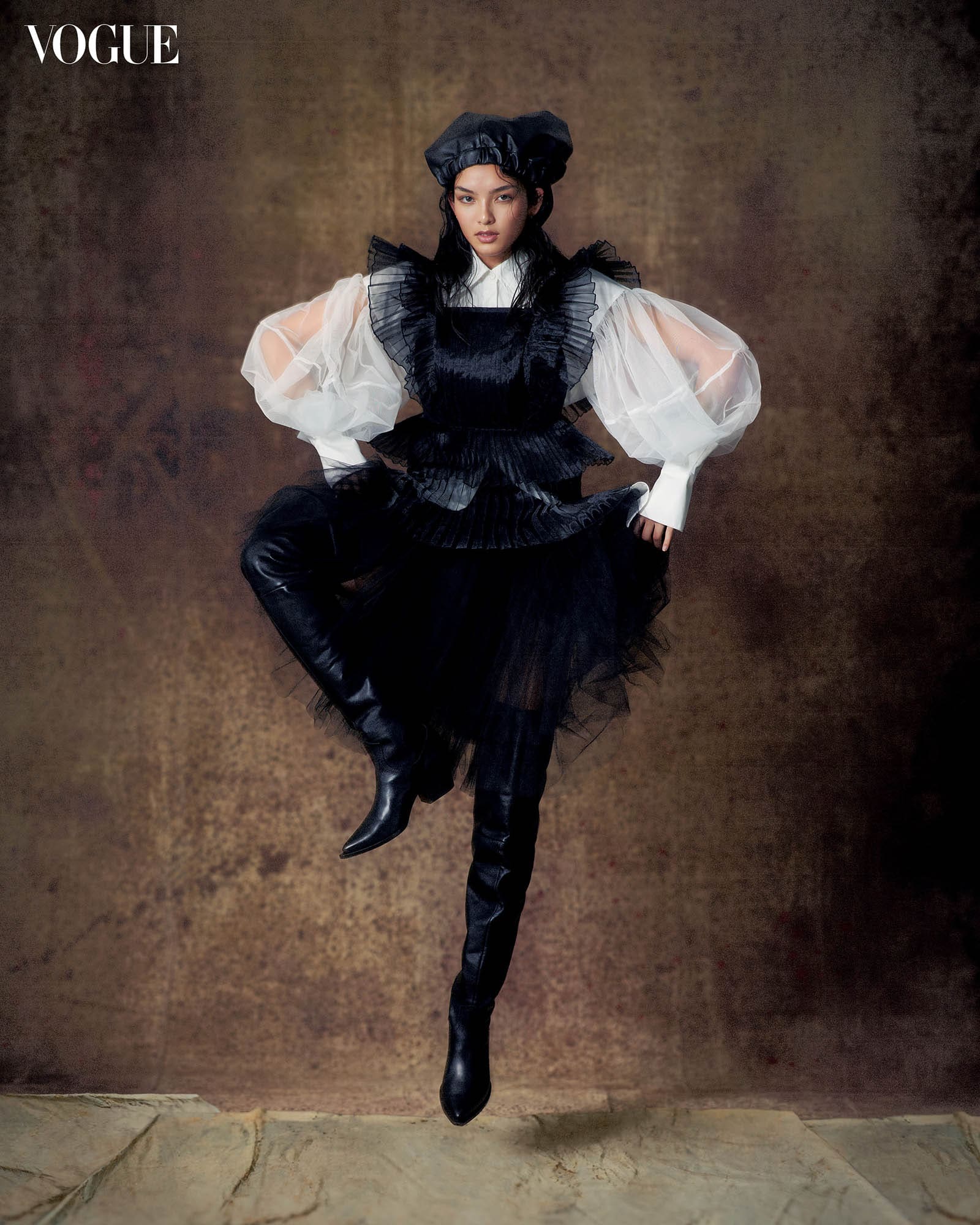
The research process, Hōne describes, was difficult because of very limited resources. He would come across written accounts, video documentaries, and even Filipinos in Louisiana Facebook group, which all provided him with more or less the same data. “What I found is there was a lot open for interpretation,” he narrates.
Initially, the photographer envisioned a Western approach to the story, referencing cowboys and horses. However, he realized that it wasn’t true to the time period he wanted to portray. Laying the groundwork for this visual story, he eventually shifted its focus to the seafaring aspect of Filipino settlers, “an archipelagic kind of element where Filipinos lived on the water in America.”
That would explain the bamboo. “This spread was focused on storytelling first and fashion secondary,” shares stylist Carlos Mangubat, whose sartorial curation of airy, flowing garments revolved around the props. Hōne offers that the bamboo stalks can be viewed as metaphors for what Filipinos are bringing into Western culture. For example, he associates bamboo with Tinikling, a traditional Philippine folk dance patterned after birds dodging bamboo traps set by farmers on rice fields.
However, the swaying trees are also representative of the literal foundations that the first Filipino settlers built. In 1883, writer Lafcadio Hearn detailed his excursion to Saint Malo, a small fishing village in Louisiana, for Harper’s Weekly. He observed, “Green are the banks, green the water is, green also with fungi every beam and plank and board and shingle of the houses upon stilts. All are built in true Manila style, with immense hat shaped eaves and balconies, but in wood.”
This particular work of Hearn’s is “the oldest known documentation of Saint Malo as a Filipino settlement,” writes Filipino historian Kirby Aráullo for History.

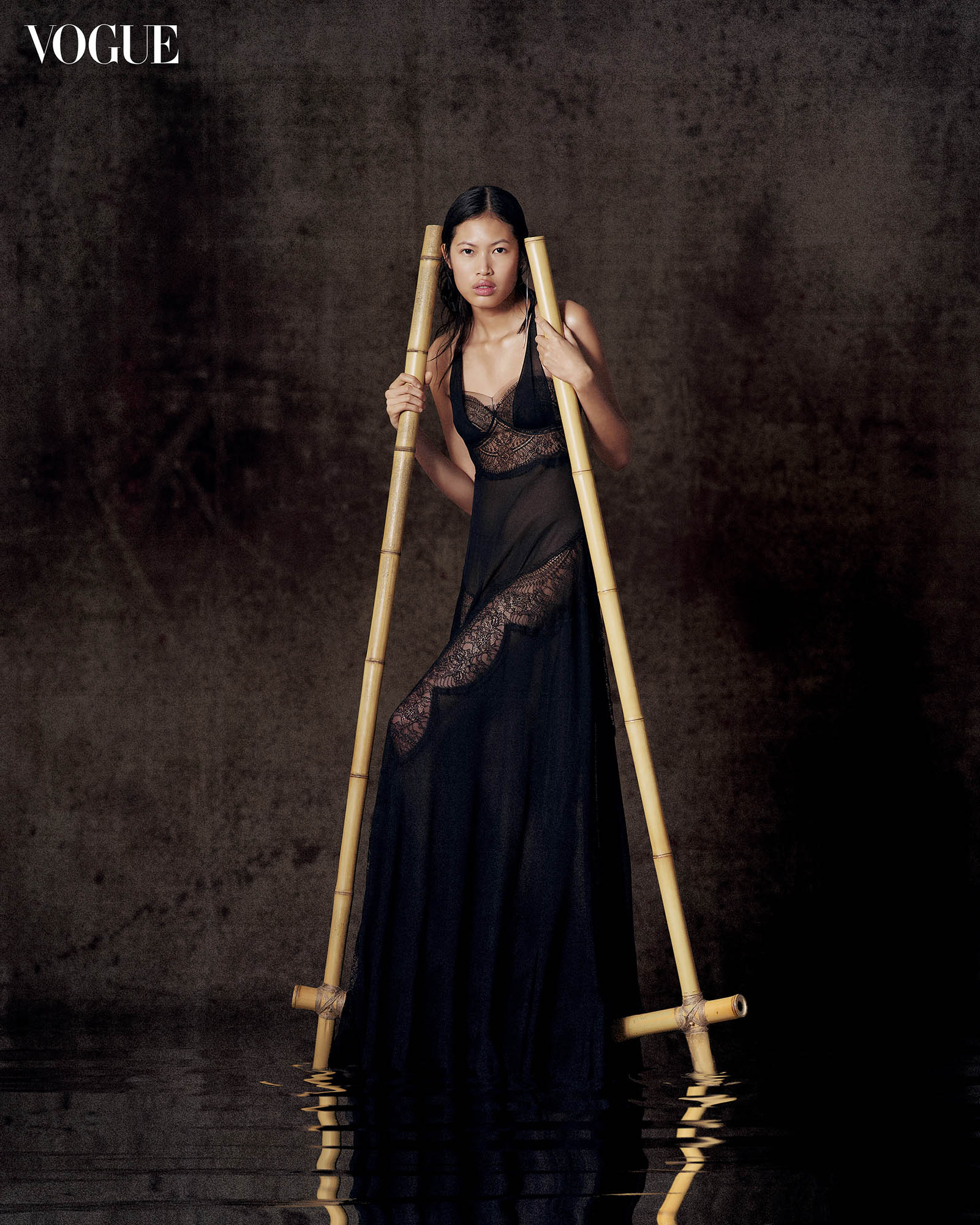
These all came up in Hōne’s research, as did the documentary about a tribe on the East coast of the Philippines. Upon viewing it, Hōne was stunned by the revelation that they live completely on water. “They literally just sleep on the water and as soon as they wake up, they just go dive and they find their food and come back up. I was like, that is crazy!” he laughs.
“Apparently when [Filipinos] got to Louisiana, a lot of the other settlers were like, ‘How do we deal with this land? It’s swampy, there’s mosquitoes, there’s no solid ground. There’s alligators, there’s crazy animals. How do we deal with it?’,” Hōne says. “And the Filipinos were like, ‘We’ll build stilts. We know how to do this. Mosquitoes? We got mosquitoes.’ It wasn’t an issue for them. I thought that was pretty cool.”
THE WORLD WE SHARE
That’s Filipino ingenuity. It’s a trait Hōne considers unique to our collective identity, along with infectious happiness and being hardworking. Perhaps these traits were magnified for him as a mixed-race individual who sits at the intersection of cultures, having a Southern American father and Filipino mother. “My mum’s very funny but still very down to earth,” he says, “she’s a real hustler as well.”
Raised “really quite white” by his father, it’s only recently that Hōne is fully embracing his Filipino heritage. He used to find contentment in the ambiguity of his Eastern and Western roots, even confessing that he could easily fit in both white and colored communities.
As he ruminates on pieces that form one’s identity, he references New Zealand’s Māori culture, which doesn’t put a premium on one’s blood percentage. “If you’re a full percentage [Māori], half, 25, one—it doesn’t matter. What matters is the lineage that goes back to an ancestor who was Māori.”
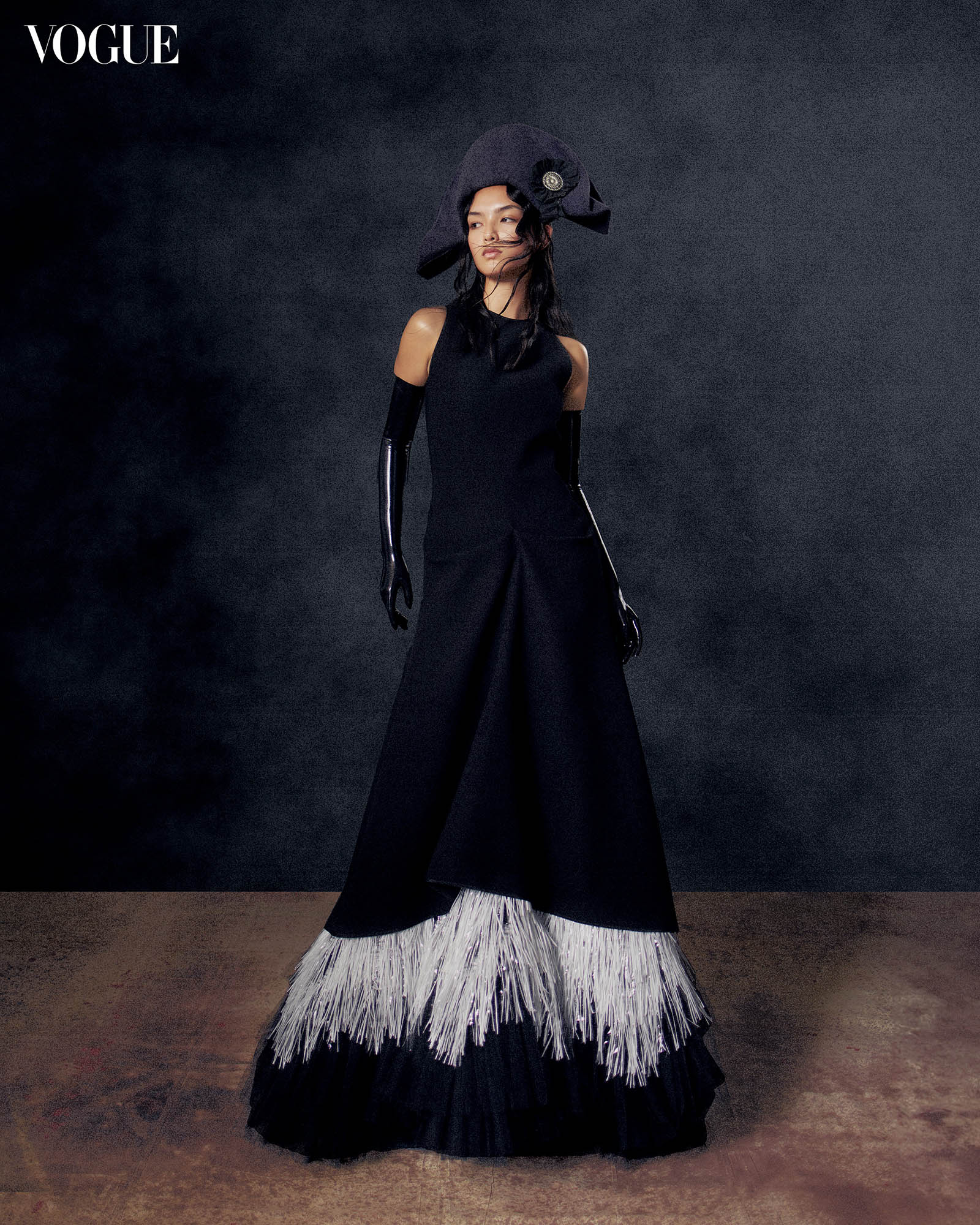
This Māori outlook afforded Hōne peace, perspective, and clarity. It’s why, despite growing up disconnected from Filipino culture, he is now untangling his family history, attempting to master Tagalog, and, surprisingly, restoring a farm.
“I bought the farm myself,” he chuckles. “The land in New Zealand has been stripped of 80 percent of its native trees. I want to restore my land that I’ve bought, primarily along the riverways, back to native forests. A big part of my project over the next five years is that I’m going to plant all the trees myself, and…” he trails off, unsure of whether to spill the rest of his plans.
He gives in after a beat, laughing when he says, “I’m going to get some horses.” He shrugs, smiling wide, “I’m going to live my dream of riding horses and being a brown guy bloody wearing a cowboy hat.”
